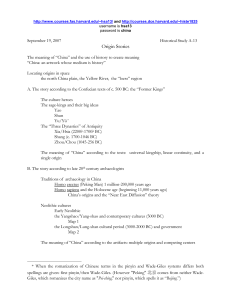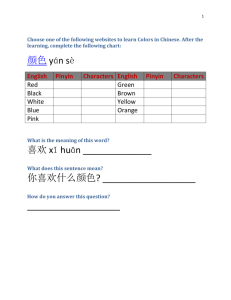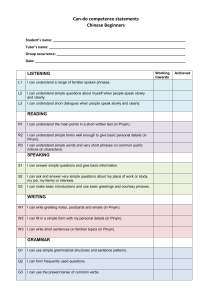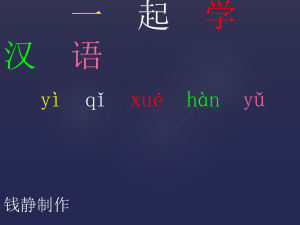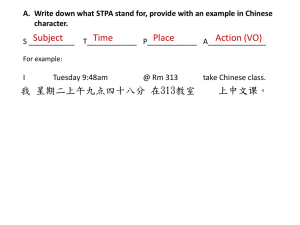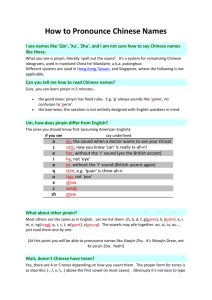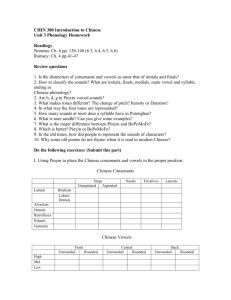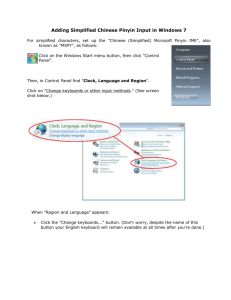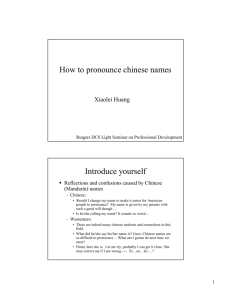Quick and Dirty Guide to Chinese Pronunciation
advertisement
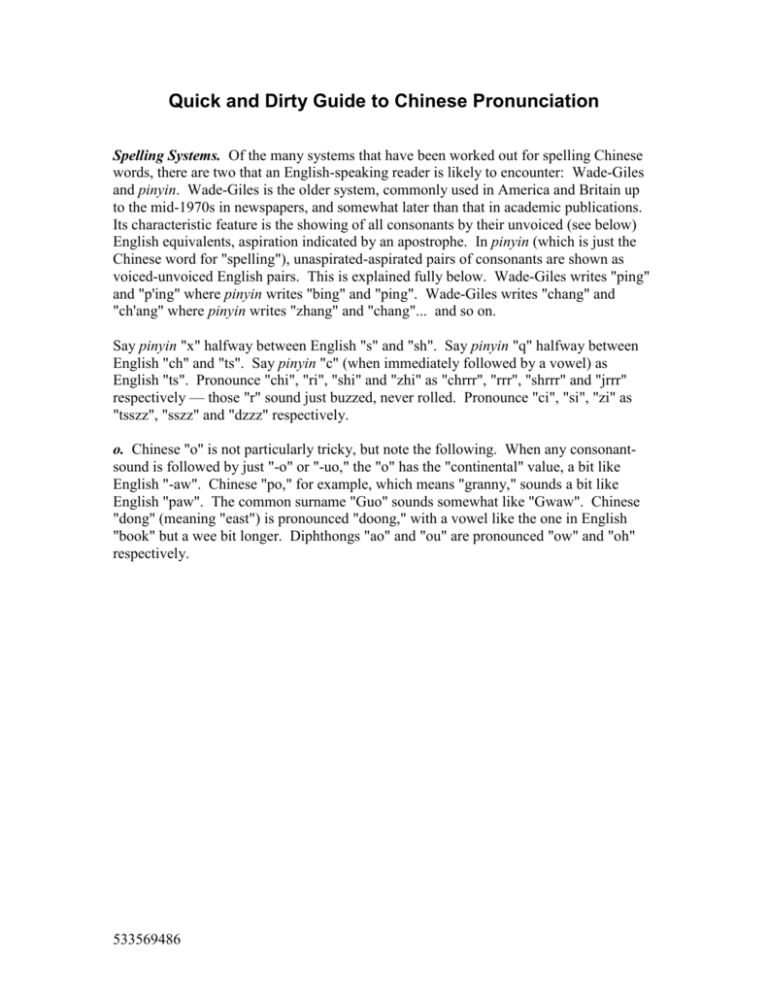
Quick and Dirty Guide to Chinese Pronunciation Spelling Systems. Of the many systems that have been worked out for spelling Chinese words, there are two that an English-speaking reader is likely to encounter: Wade-Giles and pinyin. Wade-Giles is the older system, commonly used in America and Britain up to the mid-1970s in newspapers, and somewhat later than that in academic publications. Its characteristic feature is the showing of all consonants by their unvoiced (see below) English equivalents, aspiration indicated by an apostrophe. In pinyin (which is just the Chinese word for "spelling"), unaspirated-aspirated pairs of consonants are shown as voiced-unvoiced English pairs. This is explained fully below. Wade-Giles writes "ping" and "p'ing" where pinyin writes "bing" and "ping". Wade-Giles writes "chang" and "ch'ang" where pinyin writes "zhang" and "chang"... and so on. Say pinyin "x" halfway between English "s" and "sh". Say pinyin "q" halfway between English "ch" and "ts". Say pinyin "c" (when immediately followed by a vowel) as English "ts". Pronounce "chi", "ri", "shi" and "zhi" as "chrrr", "rrr", "shrrr" and "jrrr" respectively — those "r" sound just buzzed, never rolled. Pronounce "ci", "si", "zi" as "tsszz", "sszz" and "dzzz" respectively. o. Chinese "o" is not particularly tricky, but note the following. When any consonantsound is followed by just "-o" or "-uo," the "o" has the "continental" value, a bit like English "-aw". Chinese "po," for example, which means "granny," sounds a bit like English "paw". The common surname "Guo" sounds somewhat like "Gwaw". Chinese "dong" (meaning "east") is pronounced "doong," with a vowel like the one in English "book" but a wee bit longer. Diphthongs "ao" and "ou" are pronounced "ow" and "oh" respectively. 533569486
